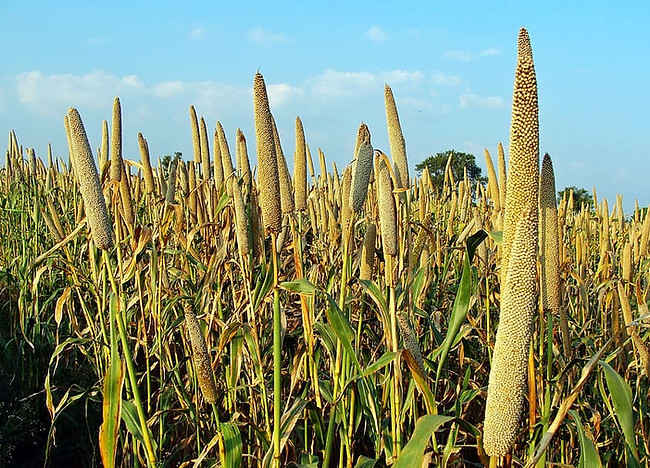Bajara information

-
Millet is a widely grown crop in the world
-
Bajara can be grown in low water, drought tolerant, so it can be grown in areas with low rainfall.
-
India is the largest producer of millets
-
Millet is used for human consumption as well as fodder and its stalks are useful for feeding animals
-
Millet is grown in various types of soil but waterlogged and sandy soils are considered good for its cultivation
-
It grows well in warm and dry climates
-
The ideal temperature range for millet cultivation is 20 to 30 degrees Celsius
Top quality Bajara cultivation

-
To bring the land under good tillage, 2-3 ploughings should be done after ploughing
-
Sowing should be done in well prepared soil to get good yield
-
Sowing should be done in early July in low rainfall areas of India and in the last week of July in high rainfall areas.
-
Use row to row spacing of 50cm and plant to plant spacing of 15cm
-
Use improved varieties of millet, sowing 1.5kg/acre. If sowing is done in well prepared soil and evenly spread toh the sowing rate can be reduced to 1kg using spacing.
-
The crop is ready for harvest when the grain hardens with sufficient moisture
-
After harvesting, collect the crop and stalks in the open and dry them for five-six days
Diseases & Remedy of Bajara Crop

.png)
-
ergot:Cream to pink mucilaginous droplets of "honeydew" ooze out of infected florets on pearl millet panicles and form sclerotia
-
Brownish orange spots develop on the foliage
-
Avoiding the excessive application of fertilizers in the field.
-
Proper cleaning of the farm and tools used between seasons is essential.
Top Bajara producing country & states


